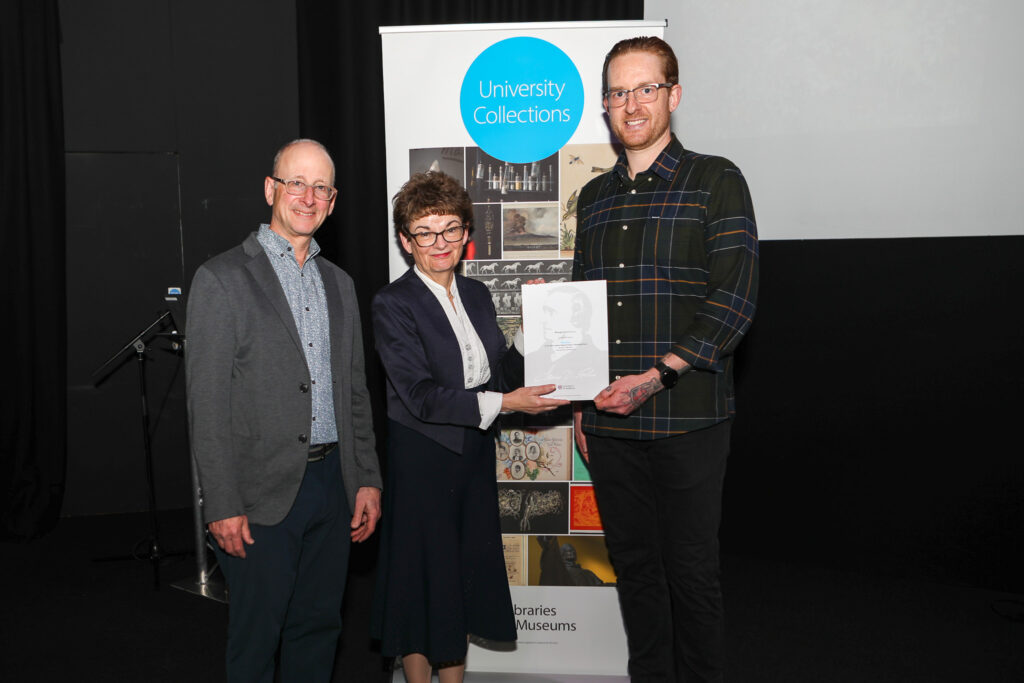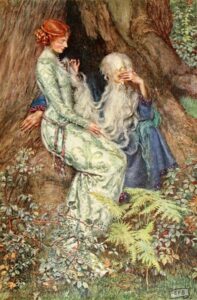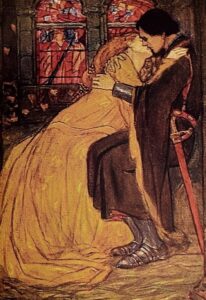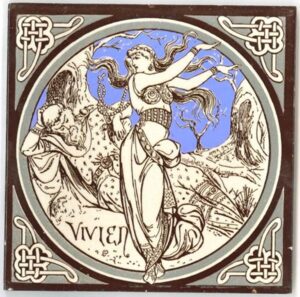Winner of the 2023 J. D. Forbes Collecting Prize: Tennysonian Arthuriana

When I received the notification that I had been chosen as the winner of the 2023 J. D. Forbes Prize, I was thrilled. Not for me, but for my collection of Tennysonian Arthuriana. I was thrilled that my collection of books and artwork associated with the Arthurian poetry of Alfred, Lord Tennyson resonated with the selection committee, and I was thrilled that I would have the opportunity to share the beauty and wisdom contained within this collection with the public. Writing about a collection that is near and dear to me was inevitably going to be a challenge, as I have so much to say and so little space to say it. In the end, I decided to answer here the questions about my collection that I most frequently receive. Let’s start at the beginning:
Who is Alfred Lord Tennyson?
When you study a poet like Alfred Tennyson for as long as I have you sometimes take it for granted that everyone knows something about that poet. Yet, when I explain to people that I study Tennyson and the Arthurian legend the response is almost always the same: “Who is Tennyson?” As such, I thought it would be helpful to write a little bit about the man who made my collection possible. Tennyson was born in Lincolnshire in 1809 and started writing poetry at around 14 or 15 years old, perhaps even earlier. Already a household name in Britain by 1842, Tennyson succeeded the Romantic poet William Wordsworth as Britain’s Poet Laureate in 1850, a post which Tennyson held until his death in 1892. Tennyson was nothing short of a nineteenth-century celebrity, and many of his poems have received continued critical attention in the twenty-first century, including “The Lady of Shalott” (1833), “Ulysses” (1842), “In Memoriam” (1850), and the inspiration behind my Arthurian collection, the twelve-part Idylls of the King (1859-1885).
What inspired you to collect Tennysonian Arthuriana?
The principal inspiration behind by collection of Tennysonian Arthuriana is my current PhD work. My project, tentatively titled The Literary Legacy of Alfred Tennyson’s Vivien: From Social Stereotype to Psychic Archetype, traces the development of Vivien—Tennyson’s evil enchantress from the Idylls who seduces and conquers Merlin—through nineteenth- and early-twentieth-century literature British and American literature. Since I started working with Tennyson’s Idylls, I have grown attached to his principal female characters—Enid, Vivien, Elaine, and Guinevere—and I love discovering illustrations of these characters that I have never seen before.
What kind of items are in your collection?
Most of the items in my collection are books. The Idylls were not published all at once, but serially between 1859 and 1885 in volumes of Tennyson’s poetry—I have all the first text editions of these serial publications. I have quite a few nineteenth- and early-twentieth-century illustrated editions of the Idylls as well as illustrated editions of Tennyson’s work that include some of his other Arthurian poetry beyond the Idylls. Also included in my collection are four ceramic tiles (c.1876) designed by John Moyr Smith that depict Enid, Vivien, Elaine, and Guinevere. The tiles come from a set of twelve that depict scenes from each of Tennyson’s twelve Idylls. I have also recently started to collect other illustrated editions of the Arthurian legend beyond Tennyson from the nineteenth and twentieth centuries.

What drew you to illustrated editions of Tennyson’s work?
As someone who has amassed a collection of roughly 2,000 comic books, I have always been interested in the relationships between text and illustration. Therefore, you could say that my interest in illustrated editions of Tennyson’s Idylls, as well as his other poems, was inevitable. Tennyson is known for being something of an “artist with words”, so his poems naturally lend themselves to artistic interpretation. In his own time, Tennyson was illustrated by the foremost artists of the nineteenth century, including Gustave Doré, Dante Gabriel Rossetti, William Morris, John Everett Millais, Edward Burne-Jones, and many others. Though I myself am a terrible artist, I have always felt that I possessed a vibrant artistic imagination, and every time I pick up an illustrated edition of the Idylls or Tennyson’s other poems I feel a deep connection with the artist, as if my own imagination is somehow taking part in the development of the imagery. I love the idea of a vital collective human imagination that transcends time and space.

Are there any illustrators/illustrations in your collection that particularly stand out to you?

My two favorite illustrators in my collection are Eleanor Fortescue-Brickdale and Florence Harrison. Brickdale’s illustration of Merlin and Vivien is one of my all-time favorites; I love the color palette she uses for Vivien and the expressiveness of both characters. Harrison’s illustration of Guinevere and Lancelot is also exceptional. It instantly recalls the Pre-Raphaelite style of Rossetti and Morris yet in many ways is, for me, the most intimate and tragic illustration of the two doomed lovers. I cannot forget to mention the impeccable work of Louis Rhead and George Wooliscroft Rhead, and John Moyr Smith. The Rhead brothers’ illustrations of the Idylls, along with being exceedingly rare, are as sublime as they are delicate. And Smith’s ceramic tiles, specifically his “Vivien” tile, are simply exquisite.

Are there any items that you are hoping to add to your collection?
So many things. . . But more specifically, I would love to add the editions of Tennyson’s poems from the early twentieth century illustrated by Jessie M. King, a famous member of the artist collective known as the “Glasgow Girls”. I would also like to build up my collection of Arthurian-themed comic books and one day write a book about them.
It is an honor to be the recipient of the 2023 James David Forbes Prize, and it has been an absolute joy to be able to share my collection with so many people. If you are interested in finding out more about the collection or any of the subjects covered above, please feel free to contact me.
James Erickson
[email protected]